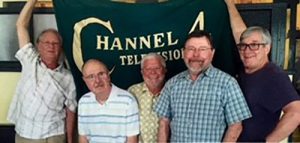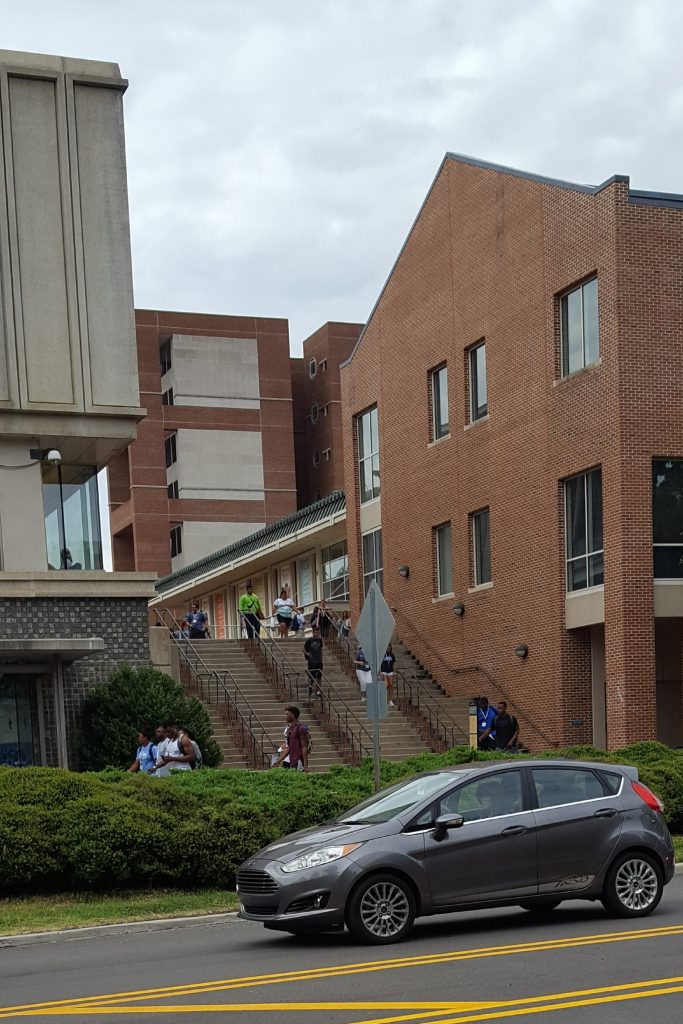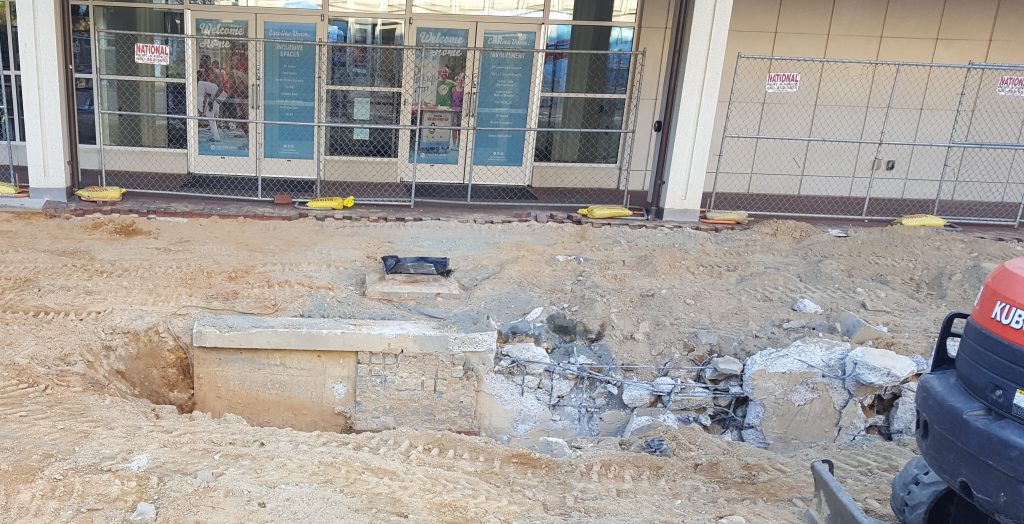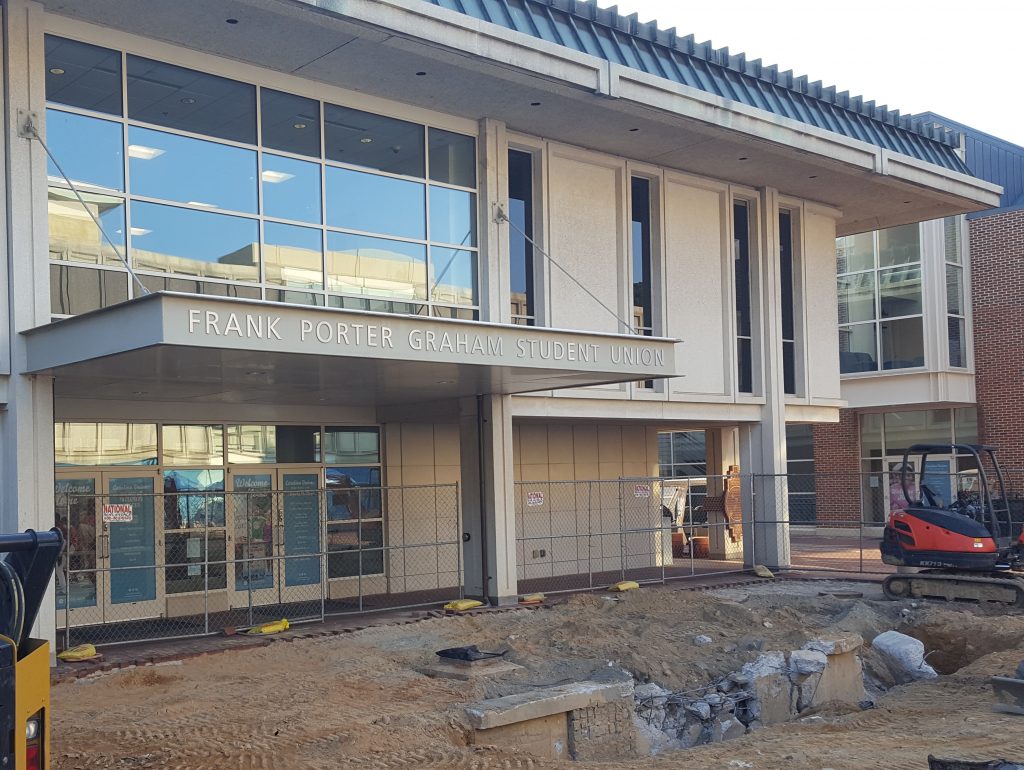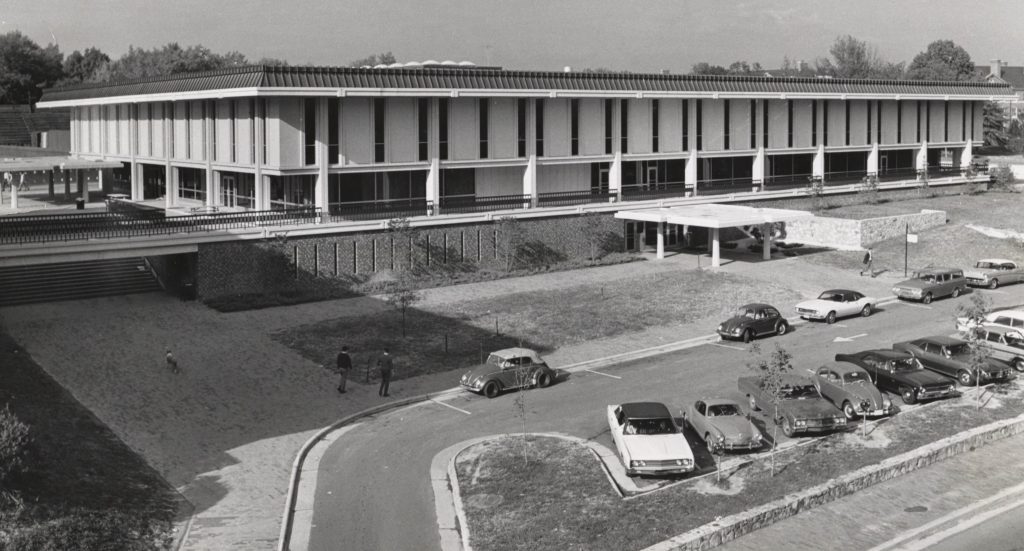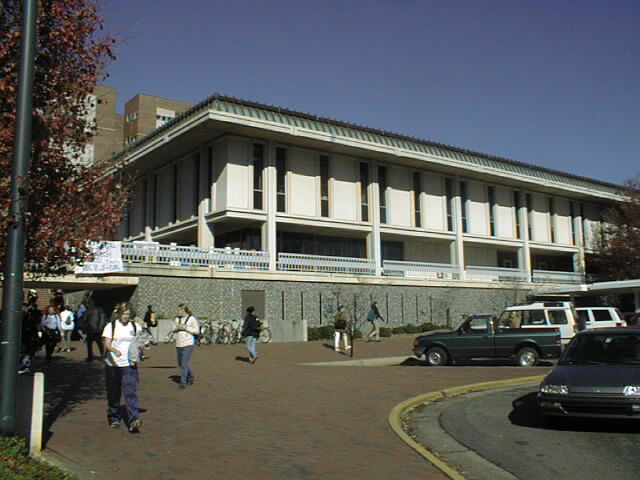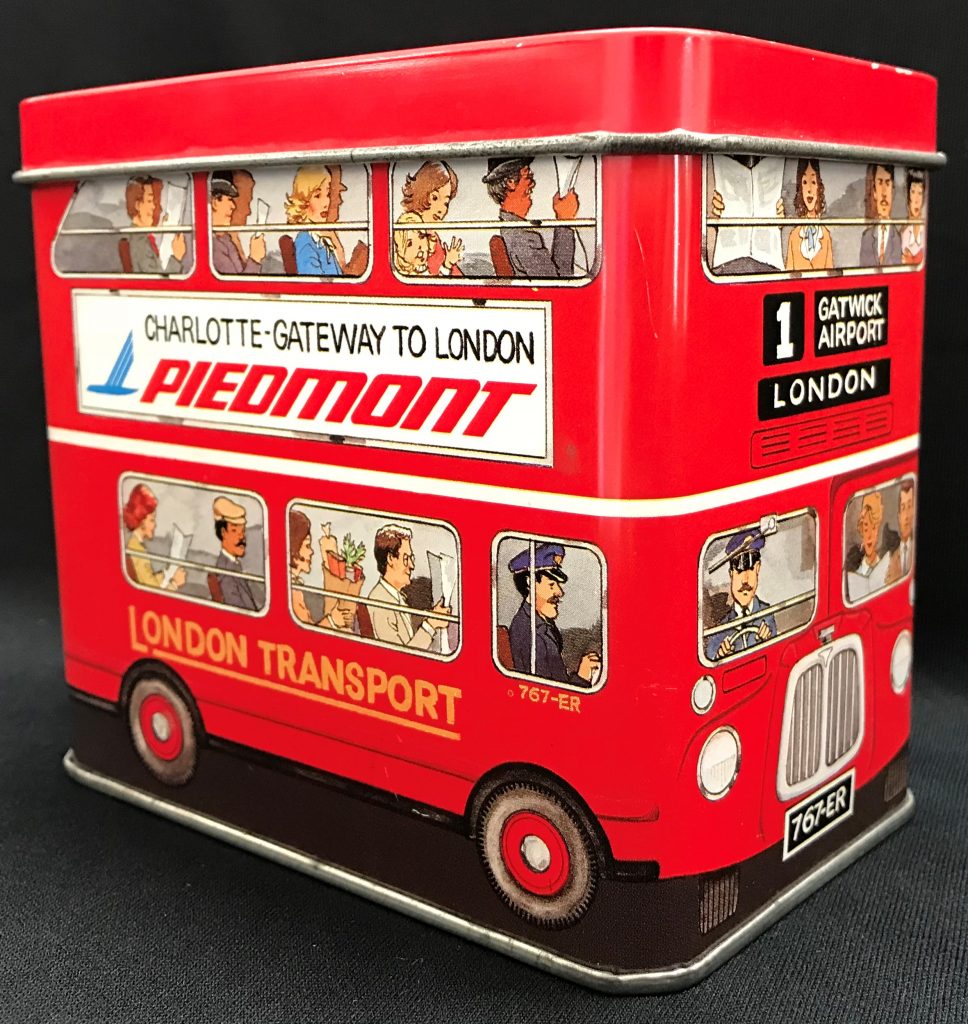If you’ve turned on a TV in North Carolina, you are probably familiar with our state’s public television station, UNC-TV. The network’s original station – WUNC-TV, Channel 4 in Chapel Hill – signed on the air January 8, 1955. Initially operating on three different campuses (Chapel Hill, Raleigh, and Greensboro), the station would continue to expand in geographical reach and content development.
For more than 60 years, WUNC-TV has brought arts, culture, history, and science programming into the homes of North Carolinians. The NC Collection Gallery is pleased to add two new artifacts documenting the station’s past: a late-1950s WUNC-TV jacket and an original Channel 4 banner.
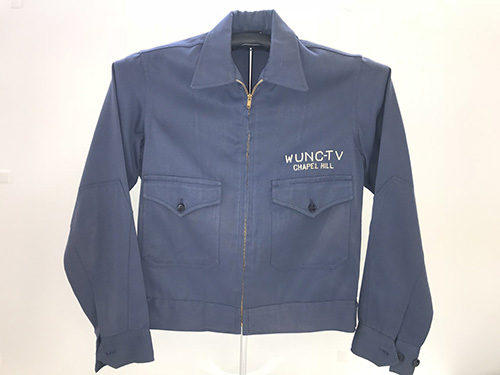

The first WUNC-TV broadcast in 1955, and its staple content for years, was college basketball. These early games were shown on television, but people would watch while listening to the radio for the commentary. By the 1960s, WUNC-TV was covering the ACC Basketball Game of the Week. The station converted a Trailways bus donated from the Town of Chapel Hill into a mobile remote unit, making it possible to cover events outside the studio.
Charlie B. Huntley from Greensboro, NC (UNC class of 1971) entered UNC in 1967 and was recruited that same year to join the Department of Radio, Television, and Motion Pictures (later incorporated into the UNC School of Journalism). Having been inspired by watching the Beatles on Ed Sullivan in 1963, Huntley jumped at the opportunity to become a cameraman with WUNC-TV. Huntley divided his time between the studio, his house on East Rosemary Street (shared with other members of the WUNC-TV Channel 4 student news team), and being on the road with a WUNC-TV camera.

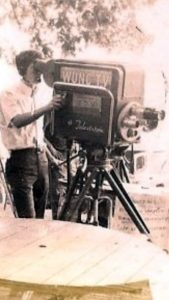
Huntley remembers traveling an untold number of miles on that Trailways bus all over North Carolina. Just to make sure their presence was known, the team would attach a large green banner with the Channel 4 logo to the side of the bus. The banner was sometimes used as a backdrop during satellite broadcasts.
While working in the WUNC-TV studio then located in Swain Hall, Huntley found an early WUNC-TV jacket in a janitor’s closet and felt a connection to his predecessors. The rayon bomber jacket was made in Greensboro and was worn by early WUNC-TV staff while on-location filming around the state.
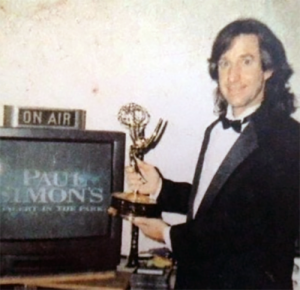
As Huntley’s time at UNC began to come to an end, he decided to keep the banner that was no longer being used by the station, as well as the jacket that was worn years before he even thought of coming to UNC. His experience as a student staff member at WUNC led to a long and successful career as a professional cameraman in New York, with 134 film and tv credits, 54 Emmy nominations, and 4 Emmy wins. Huntley speaks of his time at UNC and WUNC-TV with affection, referring to his friends and colleagues as “family” and appreciating that he was a part of “a wonderful combination of friendship, passion, and talent.”
The Gallery is proud to add these artifacts into our permanent collection to help interpret and preserve the history of WUNC-TV.
